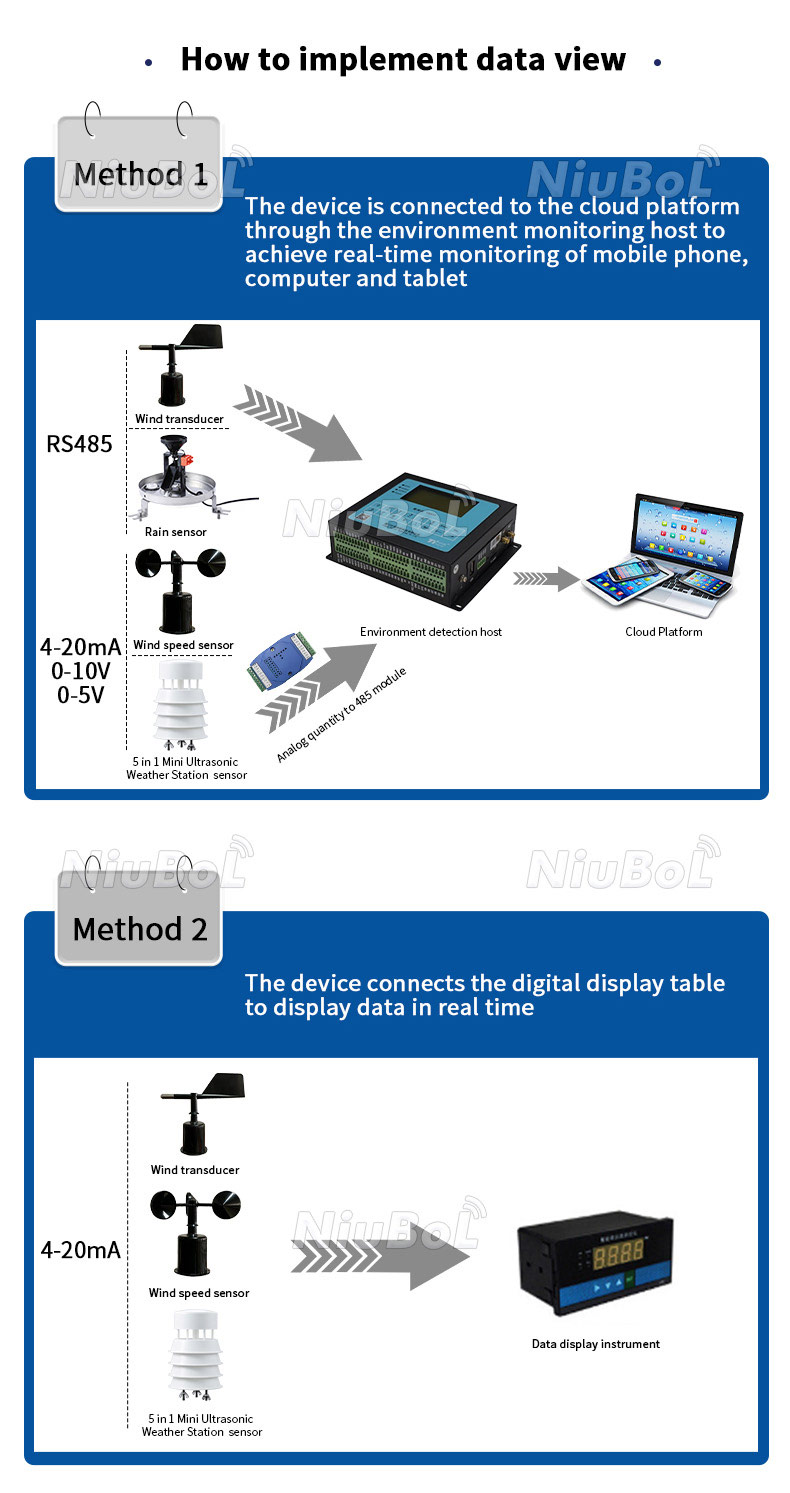

— Blogs —
—Products—
 Consumer hotline +8618073152920
Consumer hotline +8618073152920 WhatsApp:+8615367865107
Address:Room 102, District D, Houhu Industrial Park, Yuelu District, Changsha City, Hunan Province, China
Product knowledge
Time:2024-08-30 13:58:26 Popularity:296
An anemometer (anemometer) is an instrument used to measure wind speed by converting the kinetic energy of the wind into other forms of energy, such as mechanical motion or electrical signals, to quantify wind speed. The following is a detailed description of the common types of anemometers and how they work:
1. Mechanical anemometers
- Propeller-type anemometers: There is a propeller inside, and the action of the wind causes the propeller to rotate at a speed proportional to the wind speed. The speed of rotation is proportional to the wind speed. The wind speed is determined by measuring the speed of rotation of the propeller.
- Wind cup anemometer: consists of three or four conical or hemispherical empty cups, fixed at a certain angle to each other on the support. When the wind is blowing from a specific direction, the cups are subjected to a pressure difference that causes them to begin to rotate at a speed proportional to the wind speed.
2. Thermal Anemometer
- Hot wire anemometer: A thin metal wire (hot wire) is used. When the wind blows over the wire, the cooling rate of the wire varies due to different wind speeds, which results in a change in the resistance of the wire. The wind speed is determined by measuring the change in resistance.
- Thermal film anemometer: Similar in principle to the hot wire anemometer, but uses a thin metal film as the sensor and is suitable for measuring the flow rate of liquids.
- Uses the difference in propagation time of ultrasonic signals in the air to measure wind speed. When the ultrasonic signal travels in the downwind and upwind directions, its propagation time will be different, and by calculating these time differences, the wind speed and direction can be determined.
- Wind speed is calculated by measuring the difference between static and dynamic pressure. There is a small hole at the front of the Pitot tube. When air flows through the hole, the pressure difference between the two sides of the hole is related to the wind speed, and the wind speed can be calculated from this difference.
Anemometers indirectly measure wind speed by converting the kinetic energy of the wind into a measurable physical quantity (e.g. rotational speed, temperature change or pressure difference). Different types of anemometers are suitable for different environments and accuracy requirements, and choosing the right anemometer is essential for accurate wind speed measurement.

Anemometers convert the speed of air flow into quantifiable electrical or mechanical signals through different measurement methods to achieve accurate measurement of wind speed. The diversity of their operating principles and applications makes anemometers an important and indispensable tool in many fields.
Meteorological field: used to measure meteorological parameters such as wind speed, wind direction and temperature to help predict weather changes.
Environmental field: Used to measure air flow and wind speed, assess air quality, and detect pollution sources and emission outlets.
Aerospace: Used to measure air velocity and aerodynamic performance of aircraft, rockets and other aeronautical vehicles.
Construction field: for assessing wind load and aerodynamic performance of buildings, designing ventilation and air conditioning systems.
In summary, anemometers are widely used in meteorological stations, construction sites, wind power generation, navigation, aviation and other fields to monitor wind speed and environmental conditions, as well as to assess the potential value of wind energy resources. The measurement results of anemometers are important references for decision-making and safe operation in these fields.
Related recommendations
Sensors & Weather Stations Catalog
Agriculture Sensors and Weather Stations Catalog-NiuBoL.pdf
Weather Stations Catalog-NiuBoL.pdf
Related products
 Combined air temperature and relative humidity sensor
Combined air temperature and relative humidity sensor Soil Moisture Temperature sensor for irrigation
Soil Moisture Temperature sensor for irrigation Soil pH sensor RS485 soil Testing instrument soil ph meter for agriculture
Soil pH sensor RS485 soil Testing instrument soil ph meter for agriculture Wind Speed sensor Output Modbus/RS485/Analog/0-5V/4-20mA
Wind Speed sensor Output Modbus/RS485/Analog/0-5V/4-20mA Tipping bucket rain gauge for weather monitoring auto rainfall sensor RS485/Outdoor/stainless steel
Tipping bucket rain gauge for weather monitoring auto rainfall sensor RS485/Outdoor/stainless steel Pyranometer Solar Radiation Sensor 4-20mA/RS485
Pyranometer Solar Radiation Sensor 4-20mA/RS485
Screenshot, WhatsApp to identify the QR code
WhatsApp number:+8615367865107
(Click on WhatsApp to copy and add friends)